What You Need To Know About Driverless Cars
Friday, April 10, 2015
Brad Boyer, GoLocalPDX Auto Expert
 |
| The Autonomous Audi |
The buzz around the transportation industry this week has been
Uber and allowing the company to operate in Portland. Cab company drivers and the drivers for the Ap based business who “do a little driving on the side” are in a fierce battle to win the hearts and seats of passengers in town. What’s lost in this short term battle is the long range vision of the industry and all of these drivers may very possibly go the way of the carriage driver of old.
At a Code Conference last year, Uber CEO, Travis Kalanick stated, “This is the way the world is going” in reference to the driverless car. He had intimated the company could do away with the drivers as a way to reduce costs to the company and ultimately the consumer. According to a CNBC article, Kalanick declared, “Self-driving cars are coming and, when they do, Uber drivers are out of luck.”
The questions then are, what exactly are self-driving cars, are they viable and if so, how soon? They are actually more real than many people think. Last week an Audi SQ5 equipped with parts supplied by Delphi, an auto parts maker, completed a cross-country, 3,400 mile trip and 99 percent of the trip was done with the car in an automated mode. The Audi started, of course, in San Francisco and ended in Manhattan.
A Delphi statement read, “Along the way, the vehicle encountered complex driving situations such as traffic circles, construction zones, bridges, tunnels, aggressive drivers and a variety of weather conditions.” State regulations at this point require a driver to be behind the wheel to be available to override the car if needed to avoid a pedestrian or vehicle.
Audi hasn’t been limited to this trip. It recently tested the RS7 Piloted Driving Concept vehicle at a race track in Germany and hit a top speed of 140 miles per hour. White exciting, Audi engineers stressed that it was for more than just fun. They said driverless vehicles will be required to make rapid changes in direction and sometimes at high speeds. Tests like these are necessary to gauge the reliability at those speeds.
There are a couple of different classifications of driverless or autonomous cars. There is currently technology in production vehicles that can override a driver’s negligence or inattention to avoid an accident. Some vehicles have lane avoidance features that physically correct a driver that has gone over the lines and others will set the brakes at slower speeds if the driver fails to do so. A number of vehicles also already have self-parking features.
The National Highway Safety Administration has proposed a classification system to grade the vehicles:
Level 0: The driver completely controls the vehicle
Level 1: Individual vehicle controls are automated, such as electronic stability control or the automatic braking.
Level 2: At least two controls can be automated in unison, such as adaptive cruise control combined with lane keeping.
Level 3: The driver can fully cede control of all safety-critical functions in certain conditions. The car has the ability to sense and determine if the driver needs to take over control.
Level 4: The vehicle would control the entire trip and the driver would simply be a passenger. The vehicle would control all functions including parking.
To use a glaringly dated term, the cart may be before the horse on this technology. A 2014 study by Insurance.com showed that more than three quarters of licensed drivers would consider a driverless car to purchase and that number went up to 86 percent if insurance rates were cheaper. All this excitement is great, but with such a disruptive force facing the roadways more questions than answers are out there now.
In a Washington Post article on the SXSW Interactive Festival it reported some interesting comments from venture capitalist, Bill Gurley (an early investor is Uber). He was talking about the imperfect network of cars.
“Humans will be much less tolerant of a machine error causing death,” said Gurley. Despite his aggressive stance on disruptive technology, he is much more skeptical than most on the driverless vehicles. He said the cars would have to have a 99.99 percent or a near perfect safety record.
The obstacles are certainly many, and it is possible they may just be too much to overcome for wide spread acceptance. If the recent massive Takata Air Bag recall has proven, a car and its components are far from perfect. Another issue is the concern a car’s commuter could be comprised and like a good James Bond movie, mayhem could ensue.
Even with all the obstacles, the energy and excitement about one day riding in your car along the Sunset Highway and watching the latest Game of Thrones episode on your 4G wifi equipped car rather than driving for an hour seems like something the marketplace will demand.
Brad Boyer is owner of Carcierge, a car concierge company providing expert assistance on anything car-related. He also co-hosts Test Miles on 101.1 FM KXL on Sundays, and is a founding member of the Northwest Auto Press Association. You can email him your car-related questions at [email protected].
-

#10
2002 BMW 7-Series
We have all become used to all the high-tech gadgetry in today’s vehicles and even the computer mouse type designs to control the gauges, BMW was ahead of the curve on its I Drive system it introduced in their flagship 7 series. Maybe even a little over its skis too as it required a two-day training session for the public relations staff that handed out the cars to the media just to understand the complexities.
Owners complained vigorously about how difficult it was to use and eventually just tried to avoid it altogether. The 2002 was also a huge overhaul in the exterior styling as well. When the tarp was taken off the new 7 the front and side view was astonishingly beautiful. The rear view…? Well, let’s just say Kim Kardashian would have been jealous. It wasn’t at all what the BMW buyer wanted.
-

#9
Subaru Baja
This vehicle has been making an ironic sort of comeback in popularity. It’s really so impractical and ugly that it now has a great kitsch following. The Baja really didn’t know what it wanted to be. It wasn’t really a sedan and wasn’t really a pickup. Instead of offering the best of both worlds it offered less of both.
There was no middle seat in the back to make room for the rear section to fold forward. The problem there too was that only a portion of it folded forward. It was a nice little truck to drive but it was really a truck with a tiny bed that couldn’t really haul anything.
Photo via Wikimedia Commons
-
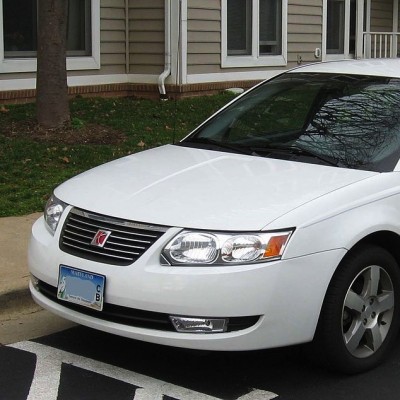
#8
Saturn Ion
This was one sad little car. The quality was terrible - it was horrible to drive with no road feel, power or handling. The interior was badly laid out and all the plastic pieces made it feel like a hot wheels car (without the cool track).
The Ion was manufactured by General Motors between 2003 and 2007. In February of 2014 it was on the list of GM vehicles recalled because of faulty ignition switches. In 2004 after being saddled with and unexpected long term loan of the 2003 Saturn Ion, Car and Drive Magazine wrote of its experience, “Anxious to drive Saturn's all-new little guy, we were soon anxious to get rid of it. Not one editor could say he or she liked the car, which, according to our road test, had a ‘pigheaded transmission, anxious steering, bar-stool seating, muddled styling, [and a] cyclopean dash.’ The acceleration numbers didn't make it any more popular.”
Photo via Wikimedia Commons
-
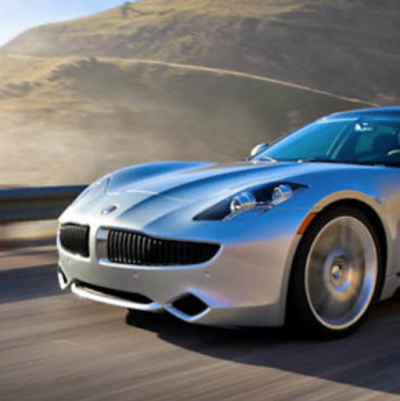
#7
Fisker Karma
This may seem an odd choice to be on a worst list as it is stunningly beautiful but as Donald Sutherland’s character uttered in the movie The Dirty Dozen when looking at the troops, "Very pretty, General. Very pretty. But, can they fight?" That’s what it felt like driving the Fisker and the answer was no.
It was the brainchild of the Henrick Fisker who was responsible for designing the BMW Z8 and served as design director for Aston Martin. The first car to be produced by Fisker Automotive was the Fisker Karma, a hybrid luxury car which debuted in January 2008 at the North American International Auto Show with great fanfare. It was supposed to hit the market in 2009 but that date was missed. The Fisker Karma production was launched in November 2011.
What really gets the Karma on the list is the huge over-promise, under-delivery element. Fisker was given access to $529 million by the Department of Energy as part of the green initiative. It was going to be the Tesla beater but while Tesla has already paid back it’s loan, Fisker declared bankruptcy in 2013 with only 2,450 units built and $193 million of the DOE loan gone. Fisker Automotive was acquired by China's largest auto parts company, and plans to restart production of its Karma. It will also complete the half-finished development of a second model, according to a senior executive.
Photo via Wikimedia Commons
-
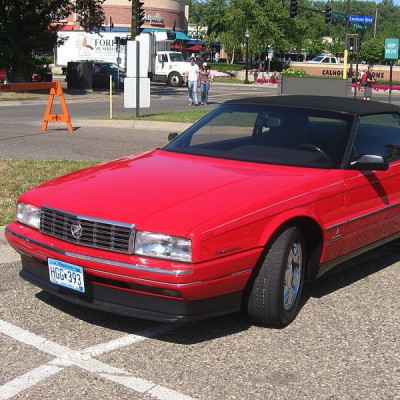
#6
Cadillac Allanté
This widely expensive Cadillac roadster was heavy, unwieldy and had a convertible top that required two people to take it off and store in the back. It was GM’s attempt to compete with the European two-seater sports cars like the SL500. In a word, Fail. GM had the bodies made by Pininfarina in Italy and then finished up the rest of the production in Detroit.
The Allanté was manufactured from 1986 until 1993, with roughly 21,000 units built over a seven-year production run.
Photo via Wikimedia Commons
-
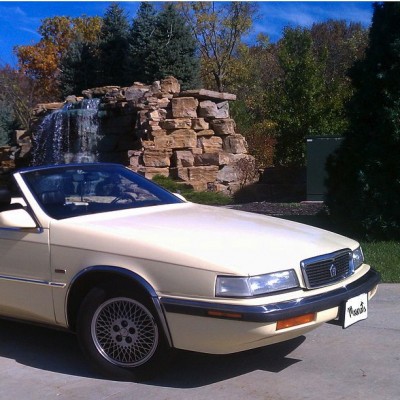
#5
Chrysler TC by Maserati
Not to be outdone by GM, Chrysler decided to get in on the European styling by offering either a bad Chrylser or a very bad Masertai. It was hard to determine which manufacturer looked worse. Chrysler's TC by Maserati was based on a modified second generation Chrysler K car and introduced at the 1986 Los Angeles Auto Show.
After two years of development delays, the TC became available in late-1989 and 7,300 units were manufactured by the time production ended in 1990. All cars sold as 1991 models were actually manufactured in 1990. Lee Iacocca, who did a lot of good things at Chrysler and sold a lot of books, was a proponent of the new model "to change the way the world looked at Chrysler" and to create a new image for the automaker.
The problem was it reminded people more of a Chrysler Lebaron which was much less expensive than a Maserati.
Photo via Wikimedia Commons
-
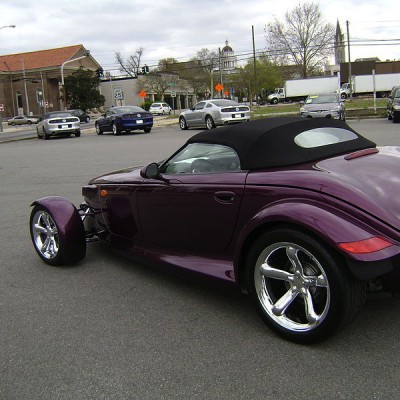
#4
Plymoth Prowler
Chrysler, in the mid 90’s thought what every older driver wanted was to remember the 50’s hot rods, so it came out with its super cool, hot-rod-looking Plymoth Prowler. It was a real retro looking roadster with the open wheel front end and the big rounded rear fenders.
The designers were said to have been given free rein to develop whatever hot rod, sports car they could create. The Plymouth Prowler was produced for the 1997 and 1999-2001 model years. After the Plymouth name was discontinued in 2001 the Prowler was sold as a Chrysler Prowler for the 2001 and 2002 model years.
Besides the complete lack of vision out of the car, the worst feature was that it was all hat and no horse…as in horsepower. It looked as if it was like the hot rods of old but was “under” powered with a standard 3.5 liter, V-6 engine producing a paltry 250 horsepower.
-
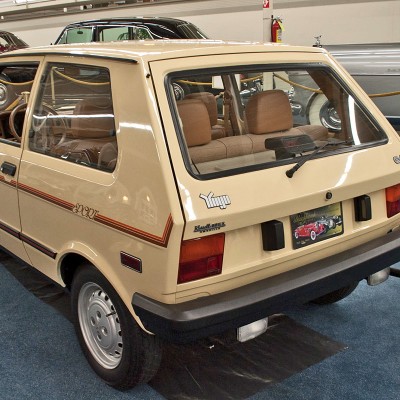
#3
Yugo
Just the word conjures up the USA pride in the fact that, while maybe we built some crummy cars over the years, at least we weren’t responsible for this little high maintenance proletariat transportation device.
In 1985, Malcom Bricklin began importing the Yugo GV to the United States. Spending any seat time in this vehicle was scary to say the least. Built in Soviet-Bloc Yugoslovia, it made its U.S. debut at the 1984 Los Angeles Auto Show. At time it looked is if the little hatchback offered buyers some value with a 55-hp engine that was capable of 30-mpg fuel ratings and a 110-mph top speed for just $3990.
But the old saying was never truer than with the Yugo, you really do get what you pay for. Most car companies take a less dramatic way to end production than the Yugo that was built at the Zastava's Kragujevac factory. The factory that was suspected of making weapons and military vehicles was bombed by NATO forces during a Kosovo air-raid. That was mercifully the end of its car-manufacturing days.
Photo via Wikimedia Commons
-
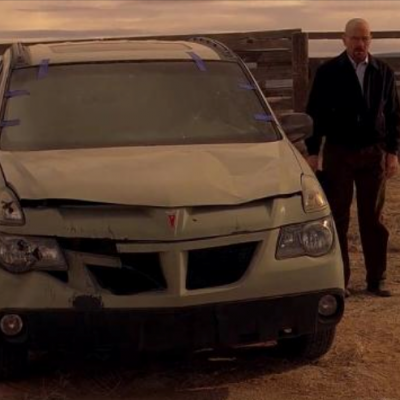
#2
Pontiac Aztec
It was a tough call which GM vehicle would get the number one slot but the horror that was this ugly SUV seemed to be generated by multiple layers of incompetence rather than the complete disregard for the consumer as our number one choice.
Like the Baja, the Aztec has taken on a new cult status with one of television’s greatest characters driving it. But even Walter White from Breaking Bad and his bad ass fedora could not save the Aztec from being a hideous vehicle. It was something of a crossover vehicle but did neither well and its plastic exterior made it the butt of many a joke and conversation.
It’s likely that when Pontiac marketing reps determined giving one away to the first Survivor winner they thought of all the great press they would get. However, following the finale of the show, Howard Stern went on the air the next day and talked about what an ugly vehicle it was and that even if they gave him one, he wouldn’t take it. GM forecast sales of up to 75,000 Azteks per year, and needed to produce 30,000 annually to break even. Just 27,322 were sold in 2001. The Pontiac Aztek was sold from 2001 to 2005.
-
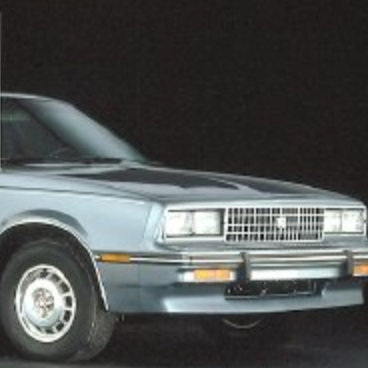
#1
Cadillac Cimarron
It used to be, General Motors buyers would work their way up the GM family of cars and when they really “made it”, they bought a Cadillac. The emblem on the front of the car meant more than just designating what brand the car was but showed off what the driver had achieved in his or her lifetime.
In the mid 80’s the GM bean counters had such disregard for their customers and the brand significance they put out the Cadillac Cimarron. The Cimarron was simply a rebranded version of GM’s entry-level product of the time, the Chevrolet Cavalier. The fake Cadillac didn't exhibit any traditional Cadillac styling features and other than Cadillac badges, was virtually identical to the Cavalier. Both the Cimarron and Cavalier were built on the same assembly plant in South Gate, California and Janesville, Wisconsin.
It was first introduced in 1981 for the 1982 model year, and sold through 1988. During its seven-year model run, 132,499 were built and those responsible should make a pilgrimage to each household and apologize. It’s hard to say what the biggest problem was with the car itself. The meager 2.0 liter 4 cylinder engine with just 88 horsepower (in a Cadillac!) didn’t help. The worst was likely the arrogant price tag of twice that of the Cavalier with the Cadillac version selling for $12,000.












